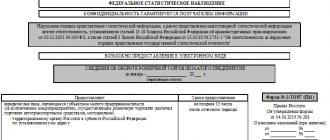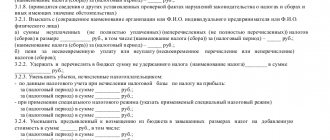We will look at when tax authorities conduct a repeat tax audit.
To begin with, you should know that a repeated desk audit has no right to be carried out (Article 88 of the Tax Code of the Russian Federation, Resolution of the Federal Antimonopoly Service of the North-Western District dated September 26, 2008 No. A66-594/2008). But if the company submits a clarification (for example, regarding VAT), then the fiscal authorities can check the same tax period as part of a new cameral.
A repeated on-site inspection can be carried out in two cases (paragraphs 5, 6, paragraph 10, article 89 of the Tax Code of the Russian Federation). Firstly, if the company provides a clarification for the reduction. Secondly, if a higher authority decides to supervise a lower-level inspection and analyze the quality of its inspection. In this regard, it would be useful to understand what risks arise during such control and how to avoid them.
For what period
The PVNP covers a period that does not exceed 3 calendar years before the year of adoption of the document appointing a repeat inspection (clause 10 of Article 89 of the Tax Code of the Russian Federation). So, if a company submits an updated return for 2013 in 2021, the tax office will not have the right to re-check it. Moreover, such a company cannot return or offset the tax according to the “clarification”, since an application for the return of overpaid tax amounts must be submitted within 3 years from the date of payment.
However, regulatory agencies believe that the tax office has the right to once again check the period specified in the “clarification”, even if it exceeds 3 years. The ruling of the Supreme Court of the Russian Federation dated March 5, 2015 No. 305-KG15-606 states that the Tax Code of the Russian Federation provides for the submission of an “update” for a time that is beyond 3 years. And the re-examination of these extended periods is consistent with the principles of tax regulation and does not affect public and private interests.
Tax audit during liquidation and reorganization of companies
How is a tax audit carried out during liquidation?
On-site inspections during the reorganization or liquidation of a company (clause 11 of Article 89 of the Tax Code of the Russian Federation) are repeated in nature. At the same time, the procedure and conditions for conducting them, the period of coverage, and the powers of inspectors coincide with the rules established for repeated inspections.
An on-site inspection carried out in connection with the reorganization or liquidation of an organization may be appointed regardless of the time and subject of the previous inspection. The decision to conduct an audit during reorganization or liquidation is made by the tax authority with which the company is registered.
It is obvious that the coverage of organizations with on-site inspections is small. During reorganization (Article 57 of the Civil Code of the Russian Federation), it is most advisable for fiscal officials to check cases of merger of profitable companies with unprofitable ones or cases of merger of unprofitable companies with profitable ones. Especially if the largest taxpayers are involved in the reorganization.
At risk are companies that are trying to merge with an organization that is on the verge of bankruptcy. With such a merger, all liquid property and current assets are usually lost or exchanged for bills of exchange. And the connecting (fusion) balance sheet, which is compiled when several organizations merge into one legal entity, plays the role of a black hole. Those who like to migrate multiple times from one inspection to another are also at risk. In this case, companies migrate through reorganization in the form of incorporation or merger. Deregistration due to reorganization-migration will entail a lightning-fast appointment of an audit.
Migration will not help avoid on-site inspection. On the contrary, the inspection will come even faster, since inspectors must have time to make a decision on scheduling an on-site inspection before making an entry in the Unified State Register of Legal Entities about a change in the location of the legal entity. Moreover, the inspectorate with which the organization is registered until a record of a change of location is made in the Unified State Register of Legal Entities has the right to make a decision to conduct an on-site inspection on the day of deregistration (letter No. ED-4-2/22699 dated December 24, 2015). That is, inspectors can calmly conduct an inspection of their already former ward. Even if the inspection does not have time to make a decision, there is always the opportunity to conduct an inspection at another inspection. But already in relation to the legal successor, to whom the rights and obligations of the legal predecessor are transferred (clauses 1, 2 of Article 58 of the Civil Code of the Russian Federation, clauses 1–5 of Article 50 of the Tax Code of the Russian Federation).
In the ruling of the Supreme Arbitration Court of the Russian Federation dated December 23, 2013 No. VAS-18603/13, the court recognized the legality of an inspection of a legal successor whose legal predecessor ceased operations, since it does not follow from the norms of the Tax Code of the Russian Federation that an inspection that did not have time to conduct an on-site inspection in connection with the reorganization of the company loses the right to conducting an audit of its successor for the period preceding the reorganization. Thus, the legal successor can be checked for the periods preceding the reorganization (determination of the Supreme Arbitration Court of the Russian Federation dated May 19, 2008 No. 5863/08). At the same time, he is presented with notifications, an act and a decision on the inspection, and a demand for payment of taxes. In case of evasion from receiving these documents, the court may find that the assignee deliberately did not provide the inspection with contact addresses for receiving the documents. That is, he evaded receiving them in hopes of canceling the inspector’s decision in court (Resolution of the Federal Antimonopoly Service of the Moscow District dated July 29, 2014 No. A40-132198/2013).
The most vulnerable audit for tax authorities is a tax audit during liquidation
Due to the increase in time limits for pre-trial appeals, the final decisions on inspections of liquidated organizations may simply not have time to enter into legal force. Knowing this, many liquidated companies try to do everything to postpone any meetings with inspectors. Some of them claim that there are no premises for conducting inspections, that documents are transferred to the liquidator from one region to another, others are trying to limit all communication with inspectors through mail. Delaying deadlines is the main trump card of companies. Inspectors, however, also have some rights. For example, they can involve police officers and determine taxes by calculation (clause 1 of Article 36, subclause 7 of clause 1 of Article 31 of the Tax Code of the Russian Federation).
However, the calculation method is not always reliable and may not hold up in court. Therefore, inspectors can issue a very detailed requirement on bank statements for several thousand contracts and invoices. As a rule, no one presents these documents. And the inspector has a reason to draw up a separate act for failure to submit documents and much more quickly issue a demand for payment of a separate fine (Article 126 of the Tax Code of the Russian Federation).
The presence of arrears can significantly delay the liquidation procedure. There was a case when a taxpayer feverishly paid a fine of 500 thousand rubles in order to be liquidated without delay. Otherwise, according to the results of the audit, the result would have been more disastrous. Unfortunately, after paying this fine, due to the lack of personal communication with the fiscal authorities, the company managed to liquidate before receiving a decision on the inspection. Therefore, in practice, inspectors manage to hand over decisions to those companies that have a significant amount of assets (property, accounts receivable, etc.), since their implementation takes time and increases tax liabilities.
Please also pay attention to these articles:
- Additional charges after an on-site audit can be included in the tax base
- Tax losses and the commission for their consideration: personal experience
Procedure and presentation of results
The repeated nature of an on-site inspection does not affect the procedure for its conduct and the compilation of results.
Decisions on initial and re-inspections may not be the same. After all, as a result of PVNP, tax authorities discover offenses that were not detected before. Then they can determine the amount of arrears that arise due to violations and charge penalties on it. But the tax service cannot issue fines for newly discovered offenses. Except for cases when, during the PVNP, inspectors discover that the results of the previous inspection were falsified by the conspiracy of the enterprise with the inspectors. Then the organization will be presented not only with penalties and arrears, but also with penalties (paragraph 7, paragraph 10, article 89 of the Tax Code of the Russian Federation).
Largest taxpayers
The legislation establishes criteria for the largest taxpayers, according to which they are recognized as such (order of the Federal Tax Service dated May 16, 2007 No. MM-3-06 / [email protected] ). Criteria include:
- indicators of financial and economic activity for the reporting year from the company’s accounting and tax reporting;
- signs of interdependence and influence of the taxpayer on the economic results of activities of interdependent persons;
- availability of a special permit (license) for the right of a legal entity to conduct a certain type of activity, for example, the production of medicines (Article 12 of the Federal Law of May 4, 2011 No. 99-FZ (as amended on December 27, 2018));
- conducting tax monitoring.
The status of the largest taxpayers at the federal level, which are subject to tax administration in the interregional inspectorates for the largest taxpayers, is assigned to companies whose total income received for the year (for any year of the previous three years, not counting the last reporting year) exceeded 35 billion rubles (subclause. 1, 8 Criteria). The amount of income is determined according to the Financial Results Report.
The largest taxpayers, regardless of income, may include:
- credit organisation;
- insurance and reinsurance organization;
- mutual insurance company;
- insurance broker;
- professional participant in the securities market;
- non-state pension fund.
If the amount of income a company receives in a year is in the range from 10 to 35 billion rubles, then it is classified as one of the largest taxpayers at the regional level, i.e. it is subject to tax administration in the interdistrict inspectorate of the Federal Tax Service of Russia for the largest taxpayers (clause 6 of the Criteria).
note
Please note that organizations that apply special tax regimes are not recognized as major taxpayers. Companies (except for credit companies), in respect of which an arbitration court has decided to declare the debtor bankrupt and a bankruptcy procedure has been introduced, cease to belong to the category of the largest taxpayers (clause 9 of the Criteria).
Grounds for re-inspection
So far, 2 grounds have been established for a repeat on-site tax audit:
- control audit by a higher tax authority of a lower-level inspection (the Federal Tax Service has the right to unilaterally review the decision of its regional department, even without the involvement of an interested taxpayer);
- receipt of an updated declaration, which indicates a tax amount that is less than that declared in the initial declaration. This could also mean increased losses. This inspection is carried out by “their own” inspection, and the inspectors, based on the changed indicators, study the period for which the clarification is presented.
If a repeat audit reveals a tax offense that was not identified during the initial on-site tax audit, sanctions will not be applied to the company. But only if there is no conspiracy with an inspection official.
About additional tax control measures and their registration
Let us recall that in accordance with paragraph 1 of Art. 101 of the Tax Code of the Russian Federation , an act drawn up by tax authorities based on the results of their audit, during which violations of tax legislation were identified, as well as written objections to this act submitted by the person being inspected must be considered by the head of the tax authority (his deputy).
Based on the results of their consideration, a decision may be made to carry out additional tax control measures. From 09/03/2018, based on the results of additional tax control measures, the inspectorate is obliged to issue an addition to the inspection report . In it, according to the rules of clause 6.1 of Art. 101 of the Tax Code of the Russian Federation, auditors record:
– the beginning and end of additional events;
– information on tax control measures carried out during the implementation of additional measures;
– additional evidence received to confirm the fact of violations of tax legislation or the absence thereof;
– conclusions and proposals of inspectors to eliminate identified violations;
– links to articles of the Tax Code if the law provides for liability for these violations.
The addition to the act must be drawn up and signed by the officials of the Federal Tax Service carrying out additional activities within 15 days from the date of their completion.
An addition to the act with the attachment of all materials received as a result of additional measures, within five days from the date of signing, is handed over to the person being inspected against a signature or transferred in another way indicating the date of its receipt.
In this case, documents received from the person in respect of whom a tax audit was carried out are not attached to the addendum to the audit report. If the person being inspected avoids receiving an addition to the inspection report, this fact must be reflected in this report. In such a situation, the addition to the act is sent by registered mail to the location of the organization or the place of residence of the individual entrepreneur and is considered received on the sixth day from the date of sending the registered letter.
Important: the new rules apply when making decisions based on the results of tax audits completed after 09/03/2018.






